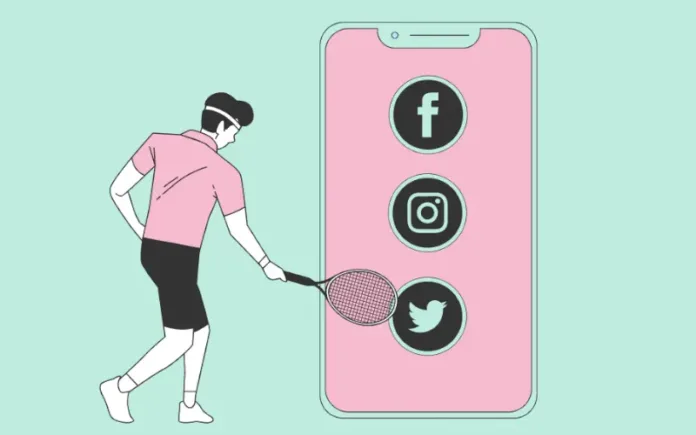Introduction:
Social media has entered every element of our lives in the present day, impacting not only sports marketing but also other areas. Social media’s dynamic nature has completely changed how sportsmen and organizations interact with fans, publicize events, and build brand loyalty.
This blog explores social media’s influence on sports marketing, looking at its emergence, advantages, challenges, and potential in this digital environment.
It will also touch upon the practice of choosing to buy Instagram followers to boost online presence.
Rise Of Social Media in Sports Marketing
The emergence of social media has had a big impact on the sports marketing industry. Sports entities now have a direct line of communication with a worldwide audience thanks to platforms like Facebook, Twitter, Instagram, and TikTok.
Due to this change, sports marketing has become more accessible and affordable, enabling even tiny businesses to reach a large audience without investing large sums of money in advertising.
Benefits of Social Media For Sports Marketing
Here are a few benefits of using social media in the category of sports marketing.
1. Revenue Generation
For sports organizations, social media platforms have transformed into effective sales and marketing avenues. Teams can directly promote ticket sales, products, and collaborations to their fans by reaching a worldwide audience.
Social media platforms also provide sports organizations with alternatives for customized advertising, enabling them to get specific age groups and optimize their return on investment.
2. Increasing and Improving Fan Engagement
Social media has changed how sports fans interact with one another. Social media sites like Twitter have transformed into virtual arenas where fans can engage in real-time discussion, analysis, and thought-sharing about games and events.
Furthermore, by providing additional opportunities for fan involvement through surveys, competitions, and interactive elements, social media platforms have improved the whole fan experience.
3. Providing Sponsorship Opportunities
Sports teams and athletes have more ways to get sponsorship deals through social media. Athletes are among the social media influencers brands increasingly use to market their goods and services.
Athletes with a sizable and active fan base may use their social media presence to draw sponsorship offers, benefiting the organization and the individual.
4. Data Analysis and Visualisation
Real-time data and analytics access is among social media’s greatest benefits for sports marketers. Social media platforms like Facebook and Twitter offer comprehensive insights about their members’ characteristics, passions, and actions.
Sports organizations may use this data to understand their fan base better and adjust their marketing tactics. Teams can improve their social media initiatives and get greater outcomes by using data-driven decision-making to analyze engagement metrics, reach, and sentiment analysis.
5. Enhancing the Personalities Of Athletes
Thanks to social media, athletes can now directly interact with their followers and create their own personal brands. Athletes may give followers a close glimpse into their lives by sharing personal narratives, training methods, and even sponsorships on social media sites like Instagram and YouTube.
Athletes who show this kind of openness and genuineness with their fan base can build a strong personal bond that opens up new avenues for support and endorsement deals.
6. Building a Fan Community
Social media platforms like Instagram, TikTok, Facebook, and Twitter have given sports teams a direct channel of connection with their fan base.
Clubs and players may cultivate a devoted and active fan base through these channels by providing exclusive interviews, behind-the-scenes information, and game and event updates.
By cultivating this sense of community, sports organizations can strengthen their bonds with their followers and boost brand loyalty and support.
7. Cost-effective Marketing
Social media marketing is more cost-effective than conventional media, allowing sports groups of all sizes to use it. The ability to target specific audiences and measure engagement in real life provides unmatched value for marketing budgets.
Also, platforms like Twitter and Instagram offer interactive features that enhance fan engagement and build a stronger community connection.
8. Global Reach
Social media allows sports organizations to interact with followers globally, extending their commercial reach worldwide, thus expanding their market presence.
Social media allows sports organizations to create a global fan base that shares their passion and enthusiasm. This international reach boosts brand visibility and opens up new opportunities for sponsorships and partnerships.
Challenges of Social Media In Sports Marketing
Organizations might face a few challenges using social media in sports marketing.
- It might be difficult to stand out and get the audience’s attention on social media due to the mass of available content.
- Social media platforms are always changing, so marketers need to modify their approaches to fit different audiences and trends.
- Sports organizations must have efficient crisis management procedures since social media may magnify negative publicity or problems.
- Budgets and resources can be difficult to justify when calculating social media efforts’ return on investment (ROI).
Conclusion: Future Of Social Media In Sports Marketing
Ultimately, social media has evolved into an essential part of sports marketing, providing businesses, sportsmen, and sports organizations with one opportunity to interact with fans, establish their brand, and increase sales.
Sports professionals should embrace social media and harness its potential as the digital landscape changes to stay ahead of the highly competitive sports market.
You can also get help from various reputable platforms like Thunderclap. They offer growth services to skyrocket your social media presence by providing natural and organic followers, likes, and views.
